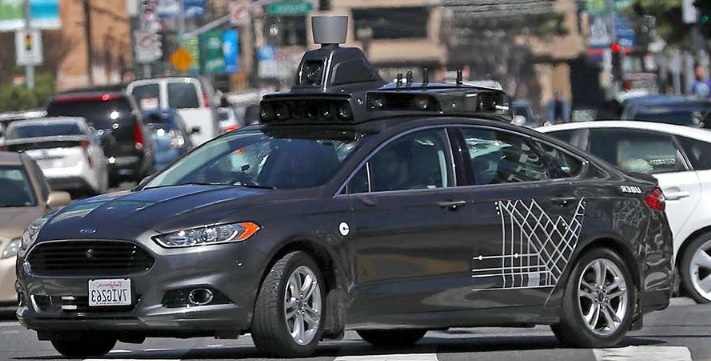National League of Cities
Autonomous vehicles (AVs) have appeared on our city streets much more quickly than originally anticipated, and auto manufacturers are racing to beat out competition in what will be the future of transportation. In addition to traditional auto manufacturers like Ford and GM, companies like Uber, Waymo, and Tesla are entering the market as well. The increased competition and sheer speed at which these new technologies are entering the market have raised concerns over public safety, public policy, and infrastructure readiness. These concerns prompted the Department of Transportation (USDOT) and the National Highway Traffic Safety Administration (NHTSA) to release its first Federal Automated Vehicles Policy Guide in May 2016. The policy guide was careful to navigate the tension between ensuring public safety through regulation while still promoting innovation. However, the federal resource still left a number of questions unanswered for cities, which will be the initial launch points and proving grounds for connected and autonomous vehicle technology.
To help answer some of these questions, the National League of Cities (NLC) subsequently released an AV Policy Preparation Guide, which aims to explore the concerns, issues, and opportunities this transformative technology represents for cities.
There are many obvious benefits that autonomous vehicles can bring to transportation, including decreased congestion, increased safety, affordability, and, of course, additional mobility options. Cities have an opportunity to be proactive in planning for AVs, shaping policies that are uniquely suited to their nuances and needs, while still remaining flexible enough to respond to the dynamic pace of innovation. There are many time-sensitive issues that municipal DOTs should begin to consider, including regulation and enforcement, privacy and cybersecurity, land use and technology requirements, public engagement and education, and municipal capacities for future infrastructure planning.

Municipal DOTs will need to work with their state DOT representatives as well as Metropolitan Planning Organizations (MPOs) and transit authorities to create a framework for planning a connected and autonomous future. It is also essential that cities get all of the right people to the table to explore options and inform decision-making. Conversations should address the burden of regulation and enforcement. For the foreseeable future, a mix of older, driver-occupied vehicles will share the road with semi- and fully autonomous vehicles. Questions of liability, insurance requirements, registration of autonomous capabilities, and the needs of local law enforcement need to be addressed as soon as possible.
Public engagement and education is perhaps one of the most critical and time intensive issues for cities to address. As auto manufacturers make promises to deploy AV technology earlier and earlier, public sentiment and buy-in regarding how it might fit into communities and existing transportation planning efforts is being largely overlooked. This has the potential to present a number of problems in the future, as AV technology becomes more mainstream, and regulatory efforts take hold.
Municipal DOTs are also strategically placed to take advantage of the vast amounts of data that AVs will collect, and should consider working out an arrangement with state DOTs to partner with AV manufacturers for select data remittance. Such data could revolutionize transportation planning, infrastructure inspection, and traffic control. At the same time, municipalities will need to be conscious of their own capacity, and work to position themselves to store, secure, process the data they hope to acquire.
Finally, cities should track and monitor federal and state developments in order to retain their seat at the table and inform any new regulation or legislation. The regulation of transportation has always been a complex balancing act, taking place at the local, state and federal levels of government. AV regulation will be no exception to that rule, and cities should be intentional about making sure their needs and values are reflected in new policy.
Cities need to start planning for AVs in their communities today, holding public workshops with residents and seeking stakeholder engagement to inform their community vision for how AVs address their needs. Beginning to host beta testing and pilot projects can be an ideal way to gather information relevant to AV capabilities and necessary policy interventions, while at the same time gauging public sentiment.
For a more thorough exploration of questions cities should consider, including public policy, municipal coordination, and infrastructure investment issues, consult NLC's full AV Policy Preparation Guide. At this point, there are certainly more questions than answers, but with AVs currently operating on our roads, cities are encouraged to start discussing and considering the policies, outreach, and legal issues that need to be addressed in order to position themselves for a smooth transition to an automated future.
Nicole DuPuis is the Principal Associate for Urban Innovation at the City Solutions and Applied Research Center at the National League of Cities.
Elias Stahl is a Research Assistant at the City Solutions and Applied Research Center at the National League of Cities.




